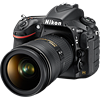Main
Model
Price
Advantages
launch
Announced
Body type
Camera subcategory
Sensor
Effective pixels
Max resolution
Sensor size
Sensor type
Processor
Image ratio w:h
Sensor photo detectors
Other resolutions
Image
ISO
Boosted ISO (minimum)
Boosted ISO (maximum)
White balance presets
Custom white balance
Image stabilization
Uncompressed format
JPEG quality levels
Photography features
Minimum shutter speed
Maximum shutter speed
Aperture priority
Shutter priority
Manual exposure mode
Subject / scene modes
Built-in flash
External flash
Continuous drive
Self-timer
Metering modes
Exposure compensation
AE Bracketing
WB Bracketing
Flash range
Flash modes
Screen / viewfinder
Articulated LCD
Screen size
Screen dots
Touch screen
Screen type
Live view
Viewfinder type
Viewfinder coverage
Viewfinder magnification
Videography features
Resolutions
File Format
Videography notes
Microphone
Speaker
Optics & Focus
Autofocus
Manual focus
Number of focus points
Lens mount
Focal length multiplier
Physical
Weight (inc. batteries)
Dimensions
Environmentally sealed
Battery
Battery details
Battery Life (CIPA)
Storage
Storage types
Connectivity
USB
HDMI
Microphone port
Headphone port
Wireless
Wireless notes
Remote control
Other features
Orientation sensor
GPS
GPS notes
Samples
Videos
Summary
The Nikon D810 highest resolution of 7360 x 4912 pixels (36 megapixels) is better than the Canon EOS 5D Mark IV highest resolution of 6720 x 4480 pixels (30 megapixels). The Canon EOS 5D Mark IV has bigger sensor compared to the Nikon D810: Full frame (36 x 24 mm) versus Full frame (35.9 x 24 mm). This is very significant advantage of this model as big sensor lets the photographer to take pictures of the better quality. The Canon EOS 5D Mark IV offers a wider ISO range of 100-32000 than 64-12800 ISO range of the Nikon D810. This ISO range allow the camera owner to take good quality pictures in dim light situations. The Nikon D810 provides more presets of white balance - 12. It gives the photographer more control over colour. The Canon EOS 5D Mark IV has more number of focus points than the Nikon D810: 61 vs 51. More number of focus points means less risk of losing focus lock while following a moving object.
The Canon EOS 5D Mark IV screen is better as it offers more number of screen dots 1,620,000 in compare to 1,229,000 dots of the Nikon D810 screen. The higher dot count screen is better for reviewing pictures on your camera. The Canon EOS 5D Mark IV is produced with a touch screen.
The Nikon D810 is produced with built-in flash. The Canon EOS 5D Mark IV has built-in Wi-Fi that will help the photographer to transfer pictures wirelessly from a camera to a PC. The Nikon D810 battery life is better in compare to the Canon EOS 5D Mark IV battery life. According to CIPA standards you will be able to capture 1200 photos with the D810 and only 900 with the EOS 5D Mark IV. The Canon EOS 5D Mark IV weighs 890g that is 90g lighter than the weight of the D810. The Canon EOS 5D Mark IV is equipped with built-in GPS. This feature can be convenient if the camera owner is a traveller, to be able to go into the photo metadata and find out exactly where a picture was shot.
The Canon EOS 5D Mark IV has 12 advantages and the Nikon D810 only 7 so the EOS 5D Mark IV is the best choice. Check the list of the best offers on Amazon.


